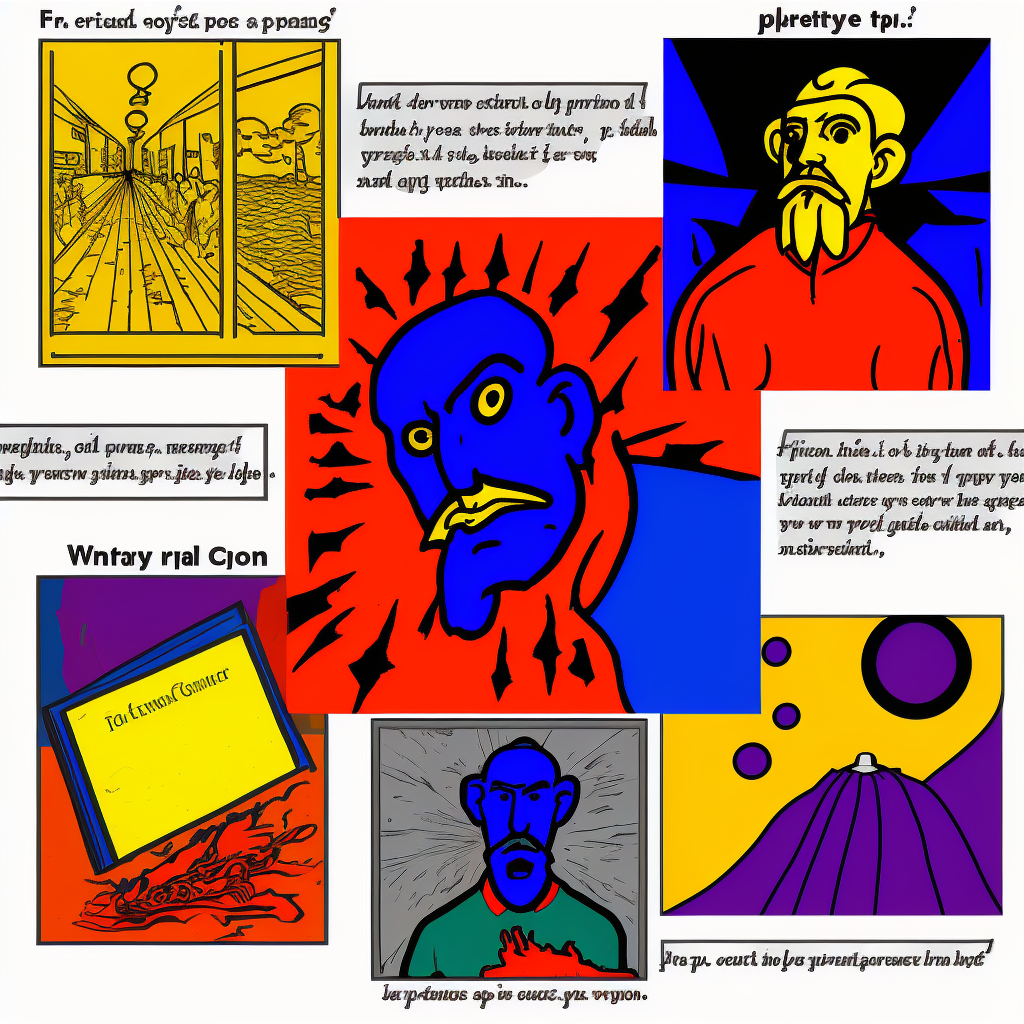Two Actually Useful GPT-3.5 Prompts for Zettelkasten Schreibers
I have been using two GPT-3.5 prompts to help me save time and improve my writing as a Zettelkasten Schreiber. The Outline to Complete Sentence English Prompt transforms outlines into complete sentence English, while the Summary Generator takes complex text and distills it into a blurb.

Audio Companion
Intro
These past few months have been a whirlwind of nothing-burger AI companies,[1] random social media (and regular media -- which in recent times have seemed to collapse in on each other w.r.t messaging about technical topics) hive-minding about whatever new model is vogue[2] -- alongside valid concerns about ML technology and the pace that it is introducing itself into the fabric of society.
This post isn't about any of that -- in fact I'd like to do the opposite of making some wild claim about how AI will do this or won't do that. I just want to talk about small W's I've been able to achieve in my daily life with this cool tech.
Here's two prompts that I've been using as a Zettelkasten Schreiber that have saved me a ton of time and have been a joy to use.
bramadams.dev is a reader-supported published Zettelkasten. Both free and paid subscriptions are available. If you want to support my work, the best way is by taking out a paid subscription.
Prompt 1: Outline to Complete Sentence English
The Outline to Complete Sentence English Prompt transforms outlines into complete sentence English. This useful for a multitude of reasons.
NB: look at the bottom of this piece for raw results from the model
Utility
The purpose of a first draft is to get ideas down on paper and examine relationships.[3] The first draft is the optimal time for the writer to do relevant research and compile external ideas.[4]
In other words, the draft state is the pouring out of thought, creating as much raw material to work with as possible, since most of it will be shaved away during the edit.
Because the drafting state is so impactful to the shape and feel of the result of the final piece, it is critical to get the totality of the idea space on paper ASAP.
Faster Writing
The Outline to Complete Sentence English Prompt allows for lower case, casual writing, which means faster writing. Faster writing means a closer orbit to the core of a thought, and without the ligaments and tendons needed for grammatical writing that are beaten into our brains during schooling it is easier to see if an idea is good by itself or if the writing is window dressing that makes it "look" good.
On Ramp to the Flow State
Outlining is also great for low energy writing, allowing the writer to get into the writing mood without needing to be at peak energy, essentially creating a slow ramping into the flow state. Analogous to exercise, jumping right in to heavy lifting without warming up is just asking for injury. Writing without warming up is a recipe for silly mistakes, or missed conceptual gold.
Wait on the Judge
Finally, by writing in outline format, the critical side of the brain is less likely to be invoked, making it easier to have more wild ideas. This means that the idea space has greater breadth, and creativity is more likely to appear in surprising places.[5]
It's Still 2023
The major downside of this prompt is that it whitewashes the author's voice; however, this can be fixed during the edit phase or during the outline phase with more "complete" outlines that leave less room for model hallucination.[6] In addition, writing in outline feels a bit awkward, but that may be more adaptation than anything. Finally, some outlines perform better than others.
This form of writing is also a form of prompt engineering, along with all of the baggage that comes with that.
With all that said, here's the prompt:
const sentencesPrompt = `Convert this bulleted outline into complete sentence English (maintain the voice and styling (use bold, links, headers and italics Markdown where appropriate)). Each top level bullet is a new paragraph/section. Sub bullets go within the same paragraph. Convert shorthand words into full words.\n\nOutline:\n${text}\n\nComplete Sentences Format:\n`;
And here is the entire command in my GPT plugin I built into Obsidian:
this.addCommand({
id: "outline-to-complete-sentences",
name: "Outline to Complete Sentences",
editorCallback: async (editor: Editor, view: MarkdownView) => {
const text = editor.getSelection(); // get selected text
const sentencesPrompt = `Convert this bulleted outline into complete sentence English (maintain the voice and styling (use bold, links, headers and italics Markdown where appropriate)). Each top level bullet is a new paragraph/section. Sub bullets go within the same paragraph. Convert shorthand words into full words.\n\nOutline:\n${text}\n\nComplete Sentences Format:\n`;
const loading = this.addStatusBarItem(); // alert user of http fetch
loading.setText("Loading...");
const sentences = await this.callOpenAIAPI(
sentencesPrompt,
engine,
1000,
0.7
);
editor.replaceSelection(
`${
this.settings.keepOriginal
? `${editor.getSelection()}`
: ""
}\n\n${sentences}`
); // replace outline with result (with option to keep outline above)
loading.setText("");
},
});
Prompt 2: Summary Generator
The Summary Generator works in the opposite direction of the Outline to Complete Sentence English Prompt. It takes a huge block of complex text and distills it into a blurb. This prompt is functionally easier to edit since the resulting text is approximately 300 to 400 characters. Additionally, since it is more referential to the source material, it is less likely to hallucinate -- the Outline to Complete Sentences Prompt has to hallucinate to come up with punctuation, pacing, words for acronyms, etc.
In terms of implementation, it is very similar programmatically to the Outline to Complete Sentence English Prompt. It uses Metadata Menu to insert it as a key-value for excerpt into YAML. From there, this excerpt can be surfaced with Dataview or a Content Management System (CMS) like Ghost.[7]
Here is the prompt:
const summaryPrompt = `Summarize this text into one or two sentences in first person format (using "I"):.\n\nText:\n${text}\n\nSummary:\n`;
And here is the full Obsidian implementation:
this.addCommand({
id: "summarize-to-frontmatter",
name: "Add Excerpt to Frontmatter",
editorCallback: async (editor: Editor, view: MarkdownView) => {
const metadataMenuPlugin =
this.app.plugins.plugins["metadata-menu"].api;
if (!metadataMenuPlugin) {
new Notice("Metadata Menu plugin not found");
return;
}
const activeFile = view.file;
if (!activeFile) {
new Notice("No file open");
return;
}
const { postValues } = app.plugins.plugins["metadata-menu"].api;
const editField = async (file: any, yamlKey: any, newValue: any) => {
const fieldsPayload = [
{
name: yamlKey,
payload: {
value: newValue,
},
},
];
postValues(file, fieldsPayload);
}; // post to key with value
const loading = this.addStatusBarItem();
loading.setText("Loading...");
const text = editor.getSelection();
const summaryPrompt = `Summarize this text into one or two sentences in first person format (using "I"):.\n\nText:\n${text}\n\nSummary:\n`;
const summary = await this.callOpenAIAPI(summaryPrompt, engine, 100);
await editField(activeFile, "excerpt", summary.trim());
loading.setText("");
},
});
Conclusion
Amidst the tornado of AI conversation on the global stage, there are minor wins to be had by just making prompts that help people do stuff. The summary prompt and the outline to complete sentence prompt have provided me a ton of utility and I'm excited to continue to refine them as time goes on. NLU has come such a long way, and being able to alleviate tedium all the while increasing the value of a piece of work is a wonderful addition to anyone's toolset.
ADDENDUM: Raw GPT-3.5 Results (READ AT YOUR OWN CAUTION/CURIOSITY!!)
Outline to Complete Sentence English
Input Outline
- first prompt: an outline to complete sentence english prompt
- the outline to complete sentence english prompt transforms lower case outlines into complete sentence english
- why is it useful?
- the purpose of a first draft is to get ideas down on paper and examine their relationships, space they take up next to each other, how complete they are
- also to do relevant research, and compile external ideas
- recommendation use shorthand for tasks for research, e.g. {research: this topic} in the outline
- also to do relevant research, and compile external ideas
- the outline to complete sentence english prompt allows for lower case writing, which means faster writing
- faster writing means stricter adherence to the core of thought
- without the ligaments and tendons needed for grammatical writing it is easier to see if an idea is good or if the writing is window dressing
- great for low energy writing -allows you to get into the writing mood without needing to be at peak energy
- a slow ramping into the flow state
- increases velocity of how much can be written in a day
- you can switch back and forth between the two as you please
- can potentially make you a better texter/short form communicator
- the purpose of a first draft is to get ideas down on paper and examine their relationships, space they take up next to each other, how complete they are
- less likely to invoke the critical side of the brain
- easier to look over and edit when it is time to edit
- thanks to outliner,
cmd-shift-⬇️andcmd-shift-⬆️move ideas in real physical space allowing writer to play with flow or easily create parent-child relationships between ideas
- downsides
- whitewashes the author's voice
- i try to fix this during the edit
- whitewashes the author's voice
GPT-3.5 Result
The Outline to Complete Sentence English Prompt transforms lower case outlines into complete sentence English. It is useful because the purpose of a first draft is to get ideas down on paper and examine their relationships, the space they take up next to each other, and how complete they are. Additionally, it allows the writer to do relevant research and compile external ideas. I recommend using shorthand tasks for research, e.g. {research: this topic} in the outline.
The Outline to Complete Sentence English Prompt allows for lower case writing, which means faster writing. Faster writing means stricter adherence to the core of thought, and without the ligaments and tendons needed for grammatical writing it is easier to see if an idea is good or if the writing is window dressing. It is also great for low energy writing, allowing the writer to get into the writing mood without needing to be at peak energy, creating a slow ramping into the flow state. This increases the velocity of how much can be written in a day, and the writer can switch back and forth between the two as they please. It can also potentially make the writer a better texter/short form communicator.
The Outline to Complete Sentence English Prompt is less likely to invoke the critical side of the brain, making it easier to look over and edit when it is time to edit. Thanks to outliner, cmd-shift-⬇️ and cmd-shift-⬆️ move ideas in real physical space allowing writer to play with flow or easily create parent-child relationships between ideas. The downside of this prompt is that it whitewashes the author's voice; however, I try to fix this during the edit.
Here is the diff of the version GPT gave back and the final edited version above
Summary Generator
Input Outline
- a summary generator
- works in the opposite direction of the outline to complete sentence english prompt
- takes a huge block of complex text and distills it into a blurb
- this prompt is functionally easier to edit since the result is ~300-400 characters
- also since it is more referential to the source material it is less likely to hallucinate
- the outline -> complete sentences prompt has to hallucinate to come up with punctuation, pacing, words for acronyms, etc.
- h3: implementation
- very similar programmatically to outline to complete sentence english prompt
- uses metadata menu to insert it as key-value for
excerptinto yaml- from there, this excerpt can be surfaced with Dataview or a CMS like Ghost
GPT-3.5 Result
A Summary Generator works in the opposite direction of the Outline to Complete Sentence English Prompt. It takes a huge block of complex text and distills it into a blurb. This prompt is functionally easier to edit since the result is approximately 300 to 400 characters. Additionally, since it is more referential to the source material, it is less likely to hallucinate; the Outline to Complete Sentences Prompt has to hallucinate to come up with punctuation, pacing, words for acronyms, etc.
In terms of implementation, it is very similar programmatically to the Outline to Complete Sentence English Prompt. It uses metadata menu to insert it as a key-value for excerpt into YAML. From there, this excerpt can be surfaced with Dataview or a Content Management System (CMS) like Ghost.
Here is the diff of the version GPT gave back and the final edited version above
I can tell because there is a 1:1 increase in how many emails I get about whatever is hot at the moment, especially from VCs who are basically all social proof gamblers
Thanks to the Outliner Obsidian Plugin,
cmd-shift-⬇️andcmd-shift-⬆️move ideas in real physical space allowing writer to play with flow or easily create parent-child relationships between ideas. This creates really fun relationship hierarchies.NB: I recommend using shorthand tasks for research, e.g. {research: this topic} in the outline. This allows you to not have to break flow of writing to fetch something.




